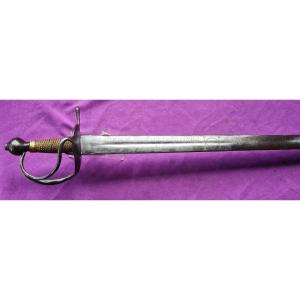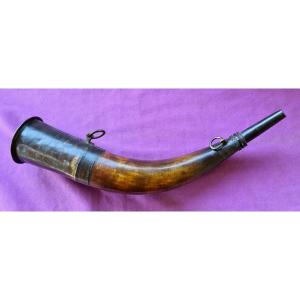Charles XI of Sweden reigned from 1660 to 1697, but reigned alone only from 1676. It was in this year that King Carolus XI, leading his army himself, won a decisive victory against the Danes at Lund. We can logically date the weapon from this time, when the popularity of the young king was immense.
This type of strong sword precedes the Walloons who were later inspired by this shape of blade and mount.
BLADE: It is a wide blade which, after a short ricasso of 2.6 cm, takes on a lenticular shape with 2 edges, which meet very close to the end of the blade to form the point. A thin groove is found on a third of each side of the blade.
On the external face, we can read in beautiful cursive letters the inscription "Vivat Carollus Undecimus, Rex et Dominus Meus" surmounted by the 2 intertwined letters C of "Carolus" and the crown of Sweden.
Length of the blade = 89.5 cm, Width near the guard = 4.1 cm, thickness at the ricasso = 5 mm
GUARD: It is a solid iron guard in one piece, which has 2 protective shells and a straight quillon. A large thumb ring curves near the handle on the inner side.
The main guard branch(knuckle bow) joins the pommel to which it is fixed by a hook, as on the majority of cavalry weapons of this period, fixings by a screw only appearing later.
A secondary guard branch starts from the external plate and joins the main branch a few centimeters from the pommel.
POMMEL: It is a globular iron pommel, topped with a small flattened button on which the tang of the blade is riveted.
GRIP : : it is made of wood, covered with a double twisted thick brass wire binding mounted in a chevrons pattern.
Brass ferrules soberly decorated with linear decoration complete the handle.
The entire weapon is perfectly homogeneous and all parts are original. This kind of strong sword is rare on the market.
Free shipping for France and Europe.
Ref AMBX-2440


















































 Le Magazine de PROANTIC
Le Magazine de PROANTIC TRÉSORS Magazine
TRÉSORS Magazine Rivista Artiquariato
Rivista Artiquariato